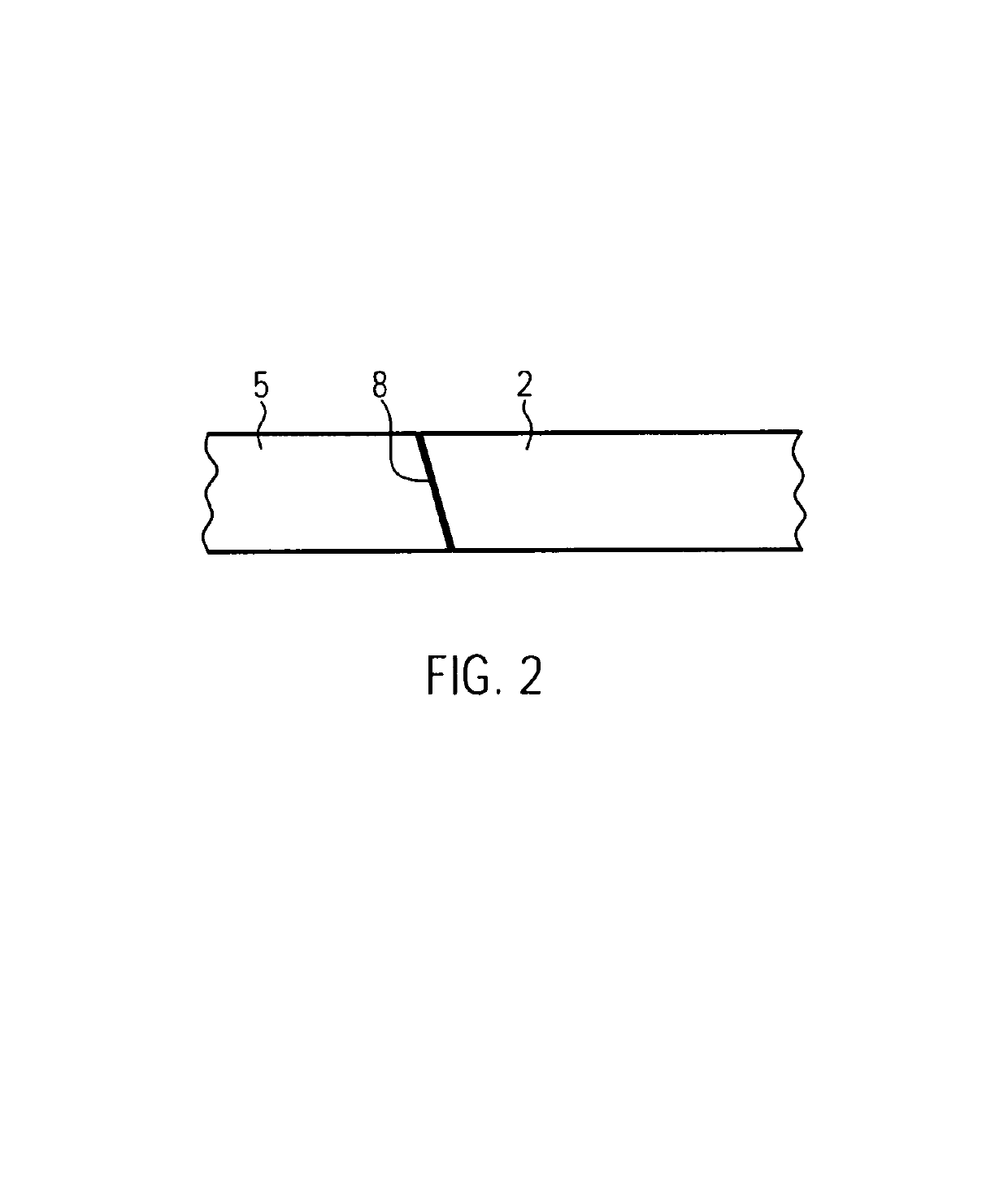Solar cell assembly I
a solar cell and assembly technology, applied in the field of solar cell assembly, can solve the problems of thermal conductivity, thermal conductivity, tedious and time-consuming back side contact of solar cells with the substrate of sca, etc., and achieve the effect of obtaining quick and reliable results
- Summary
- Abstract
- Description
- Claims
- Application Information
AI Technical Summary
Benefits of technology
Problems solved by technology
Method used
Image
Examples
Embodiment Construction
[0053]An SCA configuration manufactured in accordance with the present invention is illustrated in FIGS. 1a (top view) and 1b (side view). The SCA comprises a cooling substrate 5 and a bonding pad 2 planar joined to the cooling substrate 5. As can be seen in FIG. 1b the bonding pad 2 is flush with the cooling substrate 5 with no (particularly, no insulating) material between them. In fact, the bonding pad 2 and the cooling substrate 5 are subject to a solid state bond, thereby providing a reliable long-term durable connection unprecedented in the art. It is preferred that the bonding pad 2 and the cooling substrate 5 are made of the same material. According to an example this material is an aluminum alloy, in particular, a 99.5% aluminum alloy. Thermal stresses and galvanic elements between the bonding pad 2 and the cooling substrate 5 are avoided by the choice of the same material.
[0054]In principle, the cooling substrate 5 consists of a plane metal and shall provide thermal coolin...
PUM
 Login to View More
Login to View More Abstract
Description
Claims
Application Information
 Login to View More
Login to View More - R&D
- Intellectual Property
- Life Sciences
- Materials
- Tech Scout
- Unparalleled Data Quality
- Higher Quality Content
- 60% Fewer Hallucinations
Browse by: Latest US Patents, China's latest patents, Technical Efficacy Thesaurus, Application Domain, Technology Topic, Popular Technical Reports.
© 2025 PatSnap. All rights reserved.Legal|Privacy policy|Modern Slavery Act Transparency Statement|Sitemap|About US| Contact US: help@patsnap.com



